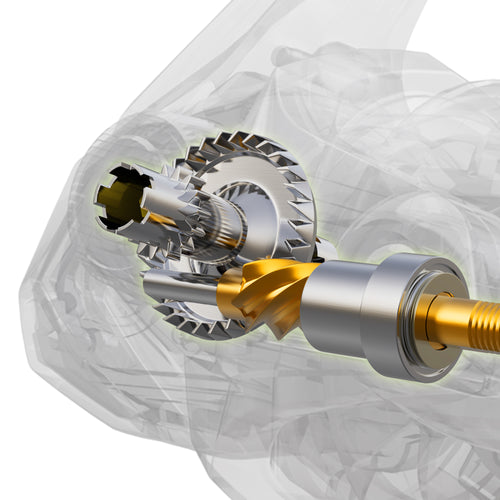Unlock the Secrets to Catching the Biggest Salmon with the Perfect Fishing Reel!
Salmon fishing is a thrilling and rewarding endeavor, filled with the promise of adventure and the potential for a bountiful catch. Whether you're standing on the shore of a tranquil river or navigating the vast expanse of the ocean, the anticipation of reeling in a hefty salmon keeps anglers returning year after year. However, the key to a successful fishing experience often lies in the equipment you choose, particularly your fishing reel. Selecting the right salmon fishing reel can make all the difference in your performance and enjoyment on the water. In this article, we will guide you through the essential factors to consider when choosing the perfect salmon fishing reel, ensuring you’re equipped for success during your next fishing trip.

Understanding Salmon Fishing Reels
When it comes to salmon fishing, not all fishing reels are created equal. A suitable fishing reel should be robust enough to handle the strength and size of salmon, which can weigh up to 100 pounds or more. Key features to consider include the reel's size, typically ranging from 2500 to 6000, depending on whether you’re fishing in freshwater or saltwater. The drag system is another crucial aspect; a smooth, reliable drag can prevent line breakage when a salmon makes a powerful run. Materials also play a significant role; reels made from corrosion-resistant materials are ideal for saltwater environments, while lightweight options may be preferred for freshwater fishing. Understanding these factors will help you choose a reel that can withstand the challenges of salmon fishing.
Types of Fishing Reels for Salmon Fishing
There are three main types of fishing reels to consider for salmon fishing: spinning reels, baitcasting reels, and fly reels. Spinning reels are popular among beginners and experienced anglers alike, known for their ease of use and versatility. They work well for both freshwater and saltwater fishing and can handle lighter lines effectively. Baitcasting reels, on the other hand, offer better accuracy and control, making them a favorite among seasoned anglers targeting larger salmon. Fly reels are specifically designed for fly fishing enthusiasts, providing the necessary support for casting lightweight flies. Each type has its advantages, and the best choice often depends on your fishing style and personal preference.
Key Features to Consider
When selecting a salmon fishing reel, there are several essential features to keep in mind. The gear ratio determines how quickly you can retrieve line; a higher gear ratio allows for faster line recovery, which can be beneficial when reeling in a fighting salmon. Line capacity is another critical feature, as it indicates how much line the reel can hold; this is especially important when targeting larger fish that may take long runs. Additionally, consider the weight of the reel; a lighter reel can reduce fatigue during long fishing sessions. By understanding these features and how they impact your fishing performance, you can make a more informed choice.
Choosing the Right Reel Based on Fishing Conditions
Your fishing environment significantly influences the type of reel you should choose. Freshwater and saltwater environments present different challenges. Saltwater fishing, often characterized by larger fish and harsher conditions, requires a reel made from corrosion-resistant materials. If you are fishing in rivers, where salmon may be more abundant, a spinning or baitcasting reel may serve you well due to their ability to handle the swift current. Additionally, the type of salmon you are targeting—whether it’s king, coho, or sockeye—can also dictate your choice of reel. Understanding these conditions will help you select a reel that meets the demands of your fishing adventures.
Maintenance Tips for Your Salmon Fishing Reel
To ensure your salmon fishing reel remains in optimal condition, regular maintenance is essential. After each fishing trip, rinse your reel with freshwater to remove any salt, sand, or debris. Lubricate moving parts as recommended by the manufacturer to keep the reel functioning smoothly. It's also important to inspect the line for any signs of wear or damage, as this can affect your reeling performance. Storing your reel in a cool, dry place will help prevent corrosion and prolong its lifespan. By following these maintenance tips, you can enjoy your salmon fishing adventures with a reel that performs at its best.
Choosing the Right Salmon Fishing Reel for Success
In conclusion, selecting the right salmon fishing reel is a crucial step in enhancing your fishing experience. By understanding the different types of reels, key features to consider, and the impact of fishing conditions, you can make an informed decision that suits your needs. Remember, the perfect fishing reel can significantly improve your chances of landing that prized salmon. So, take the time to evaluate your options, and gear up for your next adventure on the water!








